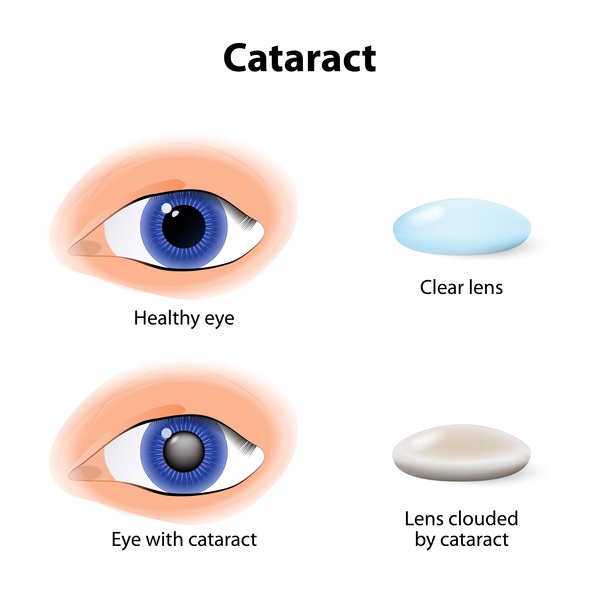Cataracts are the leading cause of blindness worldwide, and more than half of Americans over age 80 either have cataracts or have had surgery to remove them. If left untreated, cataracts can result in vision loss over time. During Cataract Awareness Month in June, the American Academy of Ophthalmology emphasizes the importance of early detection and treatment in order to preserve sight.
What Are Cataracts?
A cataract is the clouding of the eye’s natural lens that occurs when the proteins in the lens break down over time, forming clumps that can impact your vision.
Common Symptoms of Cataracts:
-
- Cloudy or blurry vision
- Double vision
- Colors appear dull or faded
- Sensitivity to bright light
- Seeing halos around lights
- Trouble seeing at night
- Frequent changes in eyeglass or contact lens prescription
Some people describe the experience of cataracts as similar to looking through a foggy window. Your vision may worsen over time and routine tasks may become more difficult.
Contact your eye doctor if you notice any of these symptoms. They may also be signs of other eye conditions.
Cataract Risk Factors
Most cataracts develop as a natural part of aging. As you get older, your risk increases as the normal proteins in the lens change.
Other factors that can raise your risk of developing cataracts include:
-
- Certain medical conditions, such as diabetes
- Family history of cataracts
- Sun exposure without proper UV eye protection
- Smoking
- Medications used to treat certain health problems, such as steroids
- Other existing eye conditions
- Eye injury, eye surgery, or radiation exposure to the upper body from chemotherapy
Can You Prevent Cataracts?
Although cataracts usually develop with age, there are steps you can take to lower your risk:
-
- Wear sunglasses that provide 100% UVA and UVB protection
- Avoid or quit smoking
- Manage health conditions like diabetes that increase cataract risk
- Attend routine eye exams
Always inform your eye doctor of any changes in your vision, even if they seem minor. Even small changes can be early signs of a more serious issue.
While surgery is the only way to remove a cataract, in early or mid-stages, small adjustments may help you manage your vision, such as brighter lighting or updated eyeglasses.
Make sure to schedule a comprehensive eye exam to ensure your eyes and vision are in good health.
If you have an underlying medical condition that increases your risk of developing cataracts, JAA Home Health can help you manage your care. Call 412-586-3249
Sources: NIH, American Academy of Ophthalmology, ASCRS; Mayo Clinic


